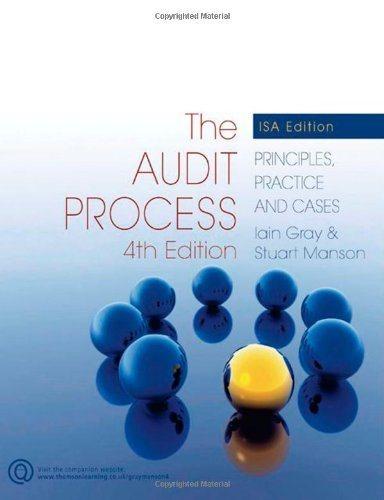Question
1. Shilling Manufacturing uses activity-based costing to assign overhead costs to products. Overhead costs have already been allocated to the company's three activity cost pools
1. Shilling Manufacturing uses activity-based costing to assign overhead costs to products. Overhead costs have already been allocated to the company's three activity cost pools as follows: Machining, $20,800; Order Filling, $30,400; and Other, $48,800. Machining costs are assigned to products using machine-hours (MHs) and Order Filling costs are assigned to products using the number of orders. The costs in the Other activity cost pool are not assigned to products. Activity data appear below:  What is the overhead cost assigned to Product U1 under activity-based costing?
What is the overhead cost assigned to Product U1 under activity-based costing?
Select one:
a. $20,016
b. $50,000
c. $6,080
d. $13,936
2.
Saunders Manufacturing uses activity-based costing to compute product margins. Overhead costs have already been allocated to the company's three activity cost pools-Processing, Supervising, and Other. The costs in those activity cost pools appear below:  Processing costs are assigned to products using machine-hours (MHs) and Supervising costs are assigned to products using the number of batches. The costs in the Other activity cost pool are not assigned to products. Activity data appear below:
Processing costs are assigned to products using machine-hours (MHs) and Supervising costs are assigned to products using the number of batches. The costs in the Other activity cost pool are not assigned to products. Activity data appear below:  Finally, sales and direct cost data are combined with Processing and Supervising costs to determine product margins.
Finally, sales and direct cost data are combined with Processing and Supervising costs to determine product margins.  The activity rate for the Supervising activity cost pool under activity-based costing is closest to:
The activity rate for the Supervising activity cost pool under activity-based costing is closest to:
Select one:
a. $8.00 per batch
b. $26.67 per batch
c. $46.80 per batch
d. $82.00 per batch
3.
Powers Manufacturing uses activity-based costing to compute product margins. In the first stage, the activity-based costing system allocates two overhead accounts-equipment depreciation and supervisory expense-to three activity cost pools-Machining, Order Filling, and Other-based on resource consumption. Data to perform these allocations appear below: 
 In the second stage, Machining costs are assigned to products using machine-hours (MHs) and Order Filling costs are assigned to products using the number of orders. The costs in the Other activity cost pool are not assigned to products.
In the second stage, Machining costs are assigned to products using machine-hours (MHs) and Order Filling costs are assigned to products using the number of orders. The costs in the Other activity cost pool are not assigned to products.  Finally, sales and direct cost data are combined with Machining and Order Filling costs to determine product margins.
Finally, sales and direct cost data are combined with Machining and Order Filling costs to determine product margins.  How much overhead cost is allocated to the Machining activity cost pool under activity-based costing in the first stage of allocation?
How much overhead cost is allocated to the Machining activity cost pool under activity-based costing in the first stage of allocation?
Select one:
a. $32,000
b. $16,000
c. $400
d. $32,400
4.
David Manufacturing uses activity-based costing to compute product margins. In the first stage, the activity-based costing system allocates two overhead accounts-equipment expense and indirect labor-to three activity cost pools-Processing, Supervising, and Other-based on resource consumption. Data to perform these allocations appear below: 
 In the second stage, Processing costs are assigned to products using machine-hours (MHs) and Supervising costs are assigned to products using the number of batches. The costs in the Other activity cost pool are not assigned to products. Activity data for the company's two products follow:
In the second stage, Processing costs are assigned to products using machine-hours (MHs) and Supervising costs are assigned to products using the number of batches. The costs in the Other activity cost pool are not assigned to products. Activity data for the company's two products follow:  Finally, sales and direct cost data are combined with Processing and Supervising costs to determine product margins.
Finally, sales and direct cost data are combined with Processing and Supervising costs to determine product margins.  The activity rate for the Processing activity cost pool under activity-based costing is closest to:
The activity rate for the Processing activity cost pool under activity-based costing is closest to:
Select one:
a. $2.00 per MH
b. $0.18 per MH
c. $0.24 per MH
d. $1.00 per MH
Step by Step Solution
There are 3 Steps involved in it
Step: 1

Get Instant Access to Expert-Tailored Solutions
See step-by-step solutions with expert insights and AI powered tools for academic success
Step: 2

Step: 3

Ace Your Homework with AI
Get the answers you need in no time with our AI-driven, step-by-step assistance
Get Started


